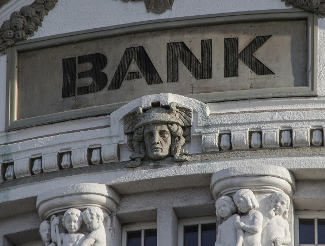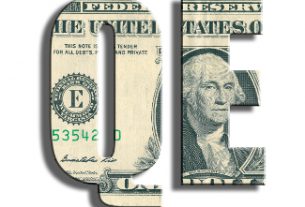Over a decade removed from the financial crisis, you would think that banks and financial institutions had learned their lesson from the crisis. With the banking system supposedly on the verge of collapse in 2008, only an enormous government bailout and massive injections of liquidity from the Federal Reserve System staved off a complete collapse. But have banks learned anything from 2008, or are they still hoping for government bailouts in the event of another financial crisis?
More and more it seems that the latter is true. According to a recent study by consulting firm McKinsey, over half of all world banks won’t survive the next financial crisis. Bank growth is slowing, revenues are declining, and fintech firms are making inroads into the banking sector with banks being unable to respond. Absent full-scale changes, most banks won’t survive the next major crisis.
Helping things along are negative interest rates, which threaten to wreak havoc on the traditional model of banking. While negative rates haven’t reached the US yet, they’re already being implemented in Europe and Japan. Banks are starting to pass those negative rates on to customers, which risks a flood of liquidity leaving the banking system.
With all these headwinds facing banks, is your money in the bank really secure? And if it isn’t, what are you doing about it?
Savings Accounts Are a Lousy Investment
Most people have realized by now that bank savings accounts are a lousy way to invest your money. Interest rates on savings accounts have been near zero for over a decade, meaning that those who stash their money away in a savings account are losing money to inflation every year. But even when interest rates on savings accounts were higher, savers were still losing money.
The German Bundesbank demonstrated that putting money into savings accounts has always been a money-losing investment strategy, as real returns on savings accounts have always been negative in the long term. While it may be necessary to park money in a savings account temporarily, as a long-term investment strategy it doesn’t make sense to keep too much money in a savings account.
Now savers and investors have to worry not just about low returns, but also about the very safety and stability of the bank holding their deposits. Even with deposit insurance, no saver wants to run the risk of trying to withdraw money from the bank and finding that they’re not able to do so.
Banking System Is Fundamentally Flawed
Part of the problem with banks is that the fractional reserve banking system is fundamentally flawed. First of all, banks always hold far less in reserves than depositors have in deposits. They operate under the assumption that not all depositors will draw on their funds at the same time. Under normal circumstances that’s true, but in times of recession or economic turmoil, more and more depositors want to withdraw their money, threatening the bank’s solvency.
Then there’s the fact that banks borrow short and lend long. The money in your bank account is actually a loan that you provide to the bank, with the bank promising that you can retrieve a certain amount of it immediately, or all of your money within a short period of time. The bank then lends your money to other people, for auto loans, mortgages, etc. The maturities of those loans are much longer, so when the short-term lenders, i.e. depositors, want their money bank, often times the bank doesn’t have enough and may have to call in loans or come hat in hand to the Federal Reserve for liquidity.
Proponents of the fractional reserve banking system praise that liquidity smoothing effect of banks, which again functions well during a normal economy. But when economic conditions deteriorate and depositors want their money, the problem with borrowing short and lending long becomes readily apparent.
Is Your Money Safe in a Bank?
Investors today have to worry whether or not their money is safe in a bank account. They remember what happened in 2008, as major banks came close to failure. Even with larger financial reserves, banks maintain only fractional reserves so that when faced with a large enough financial crisis even those increased reserves won’t be sufficient to keep them afloat.
With the Fed having pumped trillions of dollars of money and credit into the financial system in response to the 2008 crisis, the bubble that was created as a result of that new money has become gargantuan. When that bubble finally bursts, it could take down several major banks with it. Just imagine what would happen if Wells Fargo, Bank of America, or Citigroup went belly up. Millions of Americans would be devastated, hoping that their savings wouldn’t have completely evaporated into thin air.
If you think that pulling your money out of stock markets and placing your funds in a bank account is a sure way to keep them safe during the next financial crisis, you may find out the hard way that you’re incorrect. As an investor, you need to think about investing in assets that will hedge your risk.
Gold is one such asset, as it not only protects investor assets during times of financial crisis, but it’s also countercyclical, i.e. it gains value as stocks lose value. With a gold IRA, investors can even transfer existing retirement assets from a 401(k), 403(b), TSP, or similar retirement account into gold tax-free. Continuing the tax advantages of a 401(k) while protecting your assets from the risks inherent in the banking system makes a gold IRA a solid choice for investors looking to safeguard their hard-earned investments.
This article was originally posted on Goldco.




